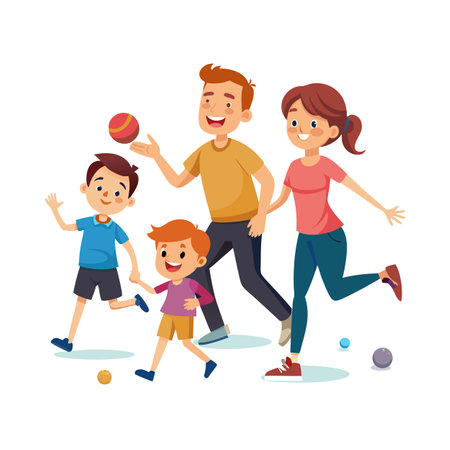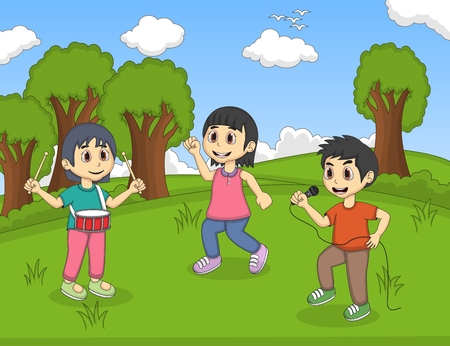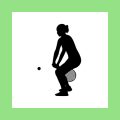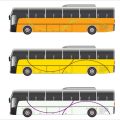1. Understanding the Unique Needs of Pediatric Patients
Overview of Child and Adolescent Development
When designing therapeutic exercise programs for children and teens, its important to recognize that kids are not just smaller versions of adults. Their bodies and minds are constantly growing and changing, which affects how they move, learn, and respond to physical activity. Children go through different stages of development, from infancy through adolescence. Each stage brings new physical abilities, emotional needs, and social skills. For example, younger kids might be learning basic motor skills like running or jumping, while teens are developing strength, coordination, and independence.
Key Developmental Stages
| Age Group | Physical Development | Cognitive/Emotional Development |
|---|---|---|
| Infants (0-2 years) | Learning to sit, crawl, walk | Exploring environment, bonding with caregivers |
| Preschool (3-5 years) | Improved balance, basic movement skills | Imaginative play, following simple instructions |
| School-age (6-12 years) | Refined coordination, increasing strength | Developing friendships, learning rules |
| Teens (13-18 years) | Growth spurts, building muscle mass | Identity formation, increased independence |
Common Conditions Addressed with Therapeutic Exercise
Pediatric therapeutic exercise can help with a range of conditions that affect movement and function in kids and teens. Some common reasons children may need therapeutic exercise include:
- Cerebral palsy
- Developmental delays
- Muscular dystrophy or other neuromuscular disorders
- Scoliosis or posture problems
- Sports injuries or orthopedic issues (like fractures or sprains)
- Obesity-related mobility challenges
- Autism spectrum disorder with motor skill difficulties
- Recovery after surgery or prolonged illness
Differences Between Pediatric and Adult Populations
Treating children isn’t the same as treating adults. Here’s a quick comparison to highlight the main differences:
| Pediatric Patients | Adult Patients | |
|---|---|---|
| Growth & Development | Bodies are still growing; exercise must support safe development. | Bodies are fully developed; focus is on maintaining or restoring function. |
| Cognitive Abilities | Learns best through play and simple instructions. | Able to understand complex directions and reasoning. |
| Motivation & Engagement | Needs fun activities; short attention spans. | Can focus longer; motivated by health goals. |
| Injury Risk | Sensitive growth plates; more risk for overuse injuries if not careful. | Tissues more resilient but may have chronic conditions. |
The Importance of Family Involvement and Communication
Pediatric therapy often requires teamwork among therapists, families, teachers, and even friends. Open communication helps everyone stay on the same page about goals and progress. Parents play a big role in supporting their child’s exercises at home and encouraging healthy habits every day. Therapists should always use clear language and age-appropriate explanations when working with children and their caregivers.
2. Foundations of Safe Pediatric Exercise Programming
Principles for Ensuring Safety in Pediatric Exercise
When designing therapeutic exercise programs for children and teens, safety always comes first. Kids and adolescents are still growing, so their bodies need special care and attention. Here are some key principles to keep in mind:
- Qualified Supervision: Always have a professional or trained adult supervise the exercise sessions.
- Age-Appropriate Activities: Choose exercises that match the child’s age, skill level, and interests.
- Gradual Progression: Start slow and increase intensity or complexity as the child grows stronger and more confident.
- Proper Warm-Up and Cool-Down: Begin each session with light activity to warm up muscles, and finish with stretching to prevent stiffness.
- Consistent Monitoring: Watch for signs of fatigue, pain, or discomfort, and make adjustments as needed.
Injury Prevention Strategies
Kids are naturally active, but they’re also more prone to certain injuries due to open growth plates, developing coordination, and varying fitness levels. Use these strategies to help prevent injuries:
- Use Proper Equipment: Make sure shoes fit well and all gear is appropriate for the child’s size and sport.
- Create a Safe Environment: Remove obstacles from exercise areas and use mats when needed.
- Emphasize Technique: Teach correct form before adding resistance or increasing speed.
- Avoid Overtraining: Limit repetitive motions and encourage rest days to allow time for recovery.
- Hydration and Nutrition: Remind kids to drink water before, during, and after activities. Promote healthy snacks for energy.
Modifying Exercises by Age Group and Ability
No two children are exactly alike. Exercise programs should be tailored not only by age but also by individual abilities. Here’s a simple guide to modifying exercises for different pediatric age groups:
| Age Group | Main Considerations | Sample Modifications |
|---|---|---|
| Toddlers (1-3 years) | Short attention span; rapid development of motor skills | Use play-based movements like crawling, hopping, or rolling; keep sessions brief (5-10 minutes) |
| Preschoolers (4-5 years) | Eager to explore; learning balance & coordination | Add obstacle courses; use colorful objects; encourage jumping, skipping, catching games |
| Elementary School (6-12 years) | Diverse skill levels; peer influence increases motivation | Introduce team activities; basic bodyweight exercises; light resistance bands if supervised |
| Teens (13-18 years) | Pubertal growth spurts; risk of overuse injuries rises | Add structured strength training with proper technique; focus on sports-specific drills; set personal goals together |
Adapting for Different Abilities
If a child has special needs or physical limitations, modify exercises by adjusting equipment (lighter balls, wider grips), reducing repetitions or duration, or providing extra support with straps or cushions. The goal is always inclusion—every child deserves a safe way to move!

3. Evidence-Based Approaches to Exercise Prescription for Kids and Teens
Guidelines for Frequency, Intensity, Type, and Duration (FITT Principle)
When creating therapeutic exercise programs for children and teens, it’s important to follow the FITT principle: Frequency, Intensity, Type, and Duration. This helps ensure that exercises are both safe and effective, while also being fun and motivating for young people.
| Component | Recommendation for Children & Teens |
|---|---|
| Frequency | At least 3 days per week; daily activity is encouraged |
| Intensity | Moderate to vigorous; should get their heart rate up but still be able to talk |
| Type | A mix of aerobic (like running or biking), muscle-strengthening (like climbing or push-ups), and bone-strengthening activities (like jumping or skipping) |
| Duration | At least 60 minutes per day, can be broken into shorter sessions throughout the day |
Adapting Programs to Individual Needs and Goals
No two kids are exactly alike! When designing exercise programs, consider each child’s age, physical abilities, interests, and any medical conditions. Here are some ways to personalize therapeutic exercises:
- Set Realistic Goals: Work with kids and their families to choose goals that matter to them—like keeping up with friends at recess or improving balance for sports.
- Consider Developmental Stage: Younger kids may need more play-based activities, while teens might enjoy structured workouts or team sports.
- Modify Activities as Needed: If a child has a physical limitation, adapt the activity so they can participate safely. For example, use resistance bands instead of weights or play games that can be done sitting down.
- Keep It Fun and Social: Group activities or games often motivate kids more than solo exercises. Try obstacle courses, dance challenges, or active video games.
- Cultural Relevance: Use activities familiar to American kids—like basketball, baseball, soccer, or even backyard games like tag—to boost participation.
Sample Weekly Exercise Plan for Pediatric Patients
| Day | Main Activity | Focus Area | Adaptations (if needed) |
|---|---|---|---|
| Monday | Biking around the neighborhood park | Aerobic/Cardio Endurance | Shorter route or use training wheels for beginners |
| Tuesday | Obstacle course in the backyard or gym class | Total Body Strength & Coordination | Simplify course steps; allow extra time for each station |
| Wednesday | Dancing to favorite music videos at home | Aerobic/Flexibility/Balance | Select slower-paced songs if needed; chair dancing for limited mobility |
| Thursday | Playing basketball with friends at the local rec center | Aerobic/Bone-Strengthening/Social Skills | Shoot from closer distances; use lighter basketballs |
| Friday | Pilates or yoga designed for kids (online video) | Flexibility/Core Strength/Relaxation | Select beginner routines; do poses with parent or therapist support |
| Saturday | Nature hike with family | Aerobic/Balance/Mental Wellbeing | Paved paths for wheelchair users; rest breaks as needed |
| Sunday | Active board games or scavenger hunt indoors | Total Body Movement/Fun/Social Interaction | Simplify rules; include everyone regardless of ability level |
Tips for Parents and Caregivers in the U.S.
- Create a routine by adding physical activity after school or before dinner.
- Praise effort over results—celebrate when your child tries something new!
- If screen time is a favorite pastime, try active video games together as a family.
By using evidence-based strategies and adjusting programs to meet individual needs, therapeutic exercise can be both safe and enjoyable for every child and teen.
4. Engagement Strategies: Making Therapy Fun and Culturally Relevant
Motivating Children and Adolescents in Therapeutic Exercise
Keeping kids and teens motivated during therapy is key to achieving progress. Here are some simple techniques:
- Goal Setting: Help children set small, achievable goals. Celebrate their successes with stickers, high-fives, or verbal praise.
- Incorporate Interests: Tailor exercises around what the child enjoys, such as sports, music, or favorite cartoon characters.
- Positive Reinforcement: Use encouragement and rewards to keep them engaged.
- Variety and Choice: Offer different activities and let kids pick what they’d like to try first.
Fostering Inclusivity in Pediatric Therapy Programs
Every child deserves to feel welcome and included. Here are ways to foster inclusivity:
- Adaptive Equipment: Use tools like balance pads, therapy balls, or modified bikes for kids with different abilities.
- Peer Support: Encourage group exercises or buddy systems to build friendships and teamwork.
- Cultural Sensitivity: Be aware of family backgrounds and preferences when planning activities.
Incorporating American Culture and Play-Based Interventions
Merging exercise with familiar American cultural themes makes therapy more enjoyable and relatable for children and teens. Here are some playful ideas:
| American Cultural Element | Play-Based Intervention Example |
|---|---|
| Sports (e.g., baseball, basketball) | Shooting hoops into a mini basketball net or practicing throwing/catching soft baseballs as part of upper body strengthening. |
| Dancing (e.g., line dancing, hip-hop) | Choreographing simple routines that focus on coordination, balance, and range of motion using popular songs. |
| Holidays (e.g., Fourth of July, Halloween) | Themed obstacle courses—crawling under “fireworks” streamers or collecting “pumpkins” while working on agility and mobility. |
| Parks & Playgrounds | Simulating playground games like hopscotch or tag indoors to practice jumping, running, and quick changes in direction. |
Tips for Therapists and Caregivers
- Create a fun environment by using colorful equipment and upbeat music.
- Invite feedback from kids about what activities they enjoy most.
- Stay flexible—adapt sessions based on mood, energy level, and response.
Your Role Matters!
Your enthusiasm, creativity, and understanding of both developmental needs and cultural backgrounds can make therapeutic exercise sessions something kids look forward to every week.
5. Collaborating with Families, Schools, and Communities
The Importance of Teamwork in Pediatric Therapeutic Exercise
Designing safe and effective therapeutic exercise programs for children and teens goes beyond what happens in the clinic. Kids spend most of their time at home, at school, and in their communities. This is why working closely with families, teachers, and caregivers is essential to help children reach their therapy goals and carry over new skills into daily life.
Best Practices for Partnering with Parents and Caregivers
Parents and caregivers play a key role in supporting a child’s progress. Here are some practical ways to build strong partnerships:
| Strategy | How It Helps |
|---|---|
| Clear Communication | Regular updates about goals and progress keep everyone on the same page. |
| User-Friendly Home Programs | Simple instructions, videos, or handouts make it easier for families to practice exercises at home. |
| Flexible Scheduling | Offering options for telehealth or after-school sessions helps busy families stay involved. |
| Cultural Sensitivity | Respecting family routines, beliefs, and backgrounds encourages trust and participation. |
| Celebrating Small Wins | Acknowledging achievements motivates kids and families to keep going. |
Working with Teachers and School Staff
Teachers and school staff can be valuable partners in supporting therapeutic exercise goals. Some ways to collaborate include:
- Sharing therapy plans so teachers know what movements or activities to encourage during class or recess.
- Providing simple classroom modifications like special seating or movement breaks.
- Training aides or school nurses on basic exercises or safe handling techniques.
- Setting up regular check-ins between therapists and school teams to adjust strategies as needed.
Tips for Effective School Collaboration
| Action Step | Example |
|---|---|
| Create a communication notebook or app | A daily log where parents, teachers, and therapists can share updates. |
| Host an in-service training session | A short workshop for teachers about a child’s needs and how to support them. |
| Simplify exercise routines for the classroom | Select one or two easy-to-do stretches that fit into the school day. |
Engaging Community Resources
Pediatric patients benefit from community involvement too. Consider partnering with local recreation centers, sports leagues, or youth programs that offer adapted activities. Therapists can also recommend inclusive classes or events that welcome children of all abilities, helping families find opportunities for socialization and physical activity outside of therapy sessions.


